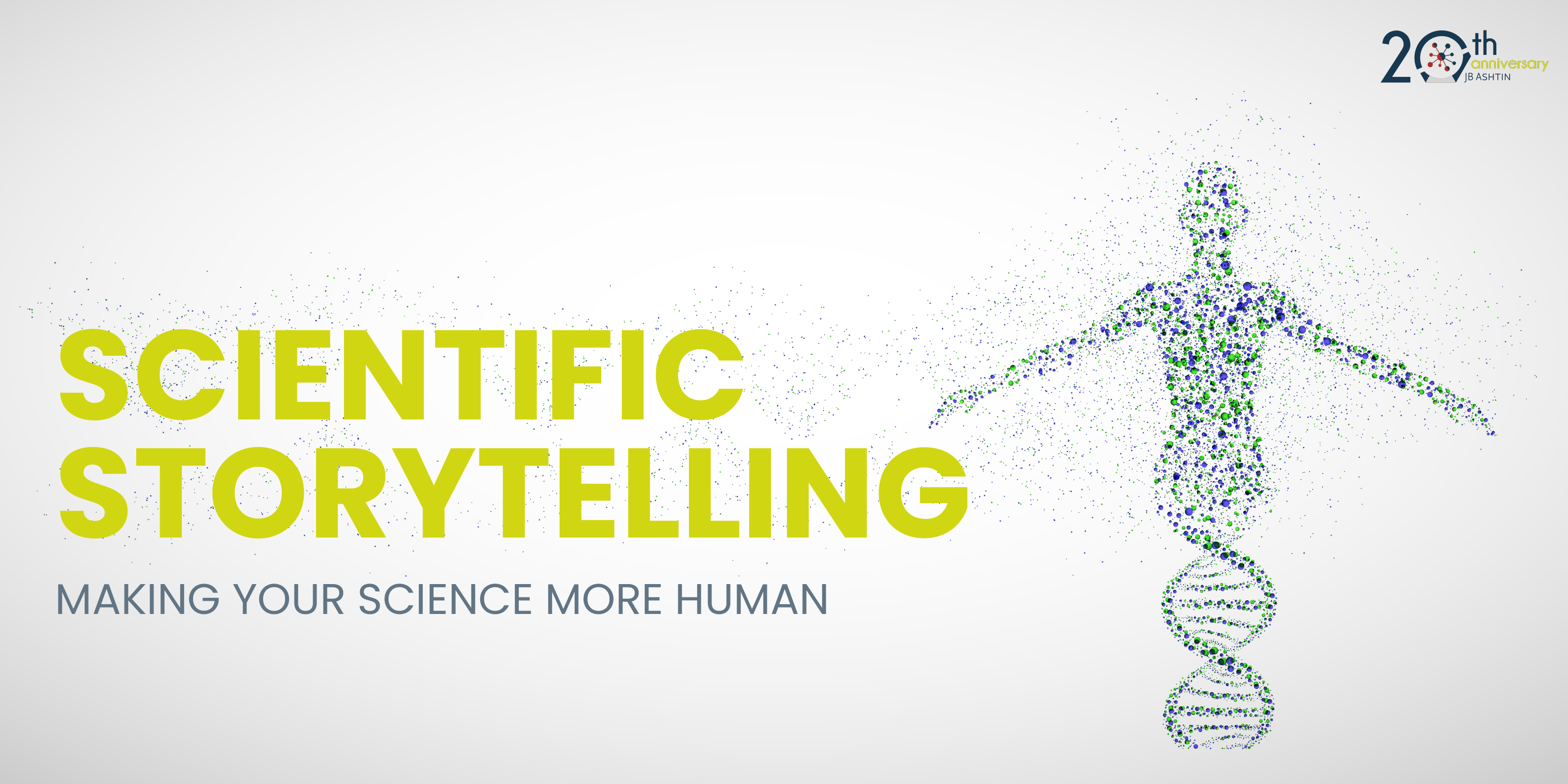Contributed by Pete Luongo, MD
Senior Scientific Director

“Scientific storytelling.” It’s what all the cool kids are doing. On every corporate website, at every congress, there is always an anecdote about the importance of using an organization’s messaging to tell a story about the brand. The buzzphrase leaked its way into the scientific world in the last 5 years and has become everyone’s branding go-to, and for good reason.
Storytelling’s impact has been emphasized for millennia, from oral traditions of early man and the first cave drawings to the imaginings of novelists throughout history—the ability to tell a good story has changed our world.
While the need to incorporate scientific stories or narratives into healthcare and medical communications is important and frequently commented on, few people address exactly HOW to go about accomplishing such a feat . . . until now. Today, I’d like to share how JB Ashtin creates informative and engaging stories for our clients. At its core, it’s simple. We take science and add humans.
What Is Scientific Storytelling?
To learn how to become a scientific storyteller, one must first understand what scientific storytelling is. In its simplest form, scientific storytelling is the use of stories to communicate complex clinical data; however, I would argue that such a simple definition is lacking.
In reality, scientific storytelling is the means by which complex clinical data are made impactful. So impactful, in fact, that healthcare professionals are driven to act.
It is more than a simple exchange of information. It is the exchange of information in context; and that context, which ideally focuses on the patient’s experience of having a particular disease, creates emotion in the intended audience. This emotional response is not meant to manipulate, but to inform. A healthcare provider who truly understands and can sympathize with the health issues the patient is facing is more likely to take action to find the best possible outcome for that patient.
Lessons from a Trekkie
Have you heard the expression, “Man cannot live on data alone”? No? That’s because I made it up, but that doesn’t make it less true! Humans are not wired like Star Trek’s Spock (I know Spock was part human). We are designed to integrate emotion into our decision-making process. When only data and facts are presented, the communicator loses the opportunity to use emotion to make his or her message more impactful; data wrapped in a story engages the HEART and the MIND.
Behavioral science has shown that provoking an emotional response through storytelling has a more persuasive effect than communicating logic and data alone. Stories create interest on an emotional level that encourages the reader, be it a researcher, physician, or patient, to reflect on the information being presented. They do not simply receive the content of the message, they engage with it, and, ideally, act on it.
Interestingly, the use of narratives is becoming increasingly important in the context of physician-patient communication. Why? Because the patient’s concerns are being put into context. They are not presented as a list of complaints. These concerns are presented as a story. This allows the physician to make connections between simple facts, sympathize with the patient, and experience emotion, all of which allow the physician to make a well-rounded, informed decision in the best interest of the patient.
Consider the Patient Burden
To wit, one could argue that describing an unmet need in the following way is impactful and capable of creating an emotional response for a physician or other healthcare professional: “Less than half of patients with type 2 diabetes achieve an A1C of < 7.0%. Treatments are needed that make it easier for patients to reach their A1C goal and prevent complications of the disease.” And, I would agree. But, as a medical communicator, I think we are missing an opportunity to tell a story that really resonates with the reader.
Integrating the patient’s experience with diabetes into the unmet need described above provides an opportunity for the writer to craft a more impactful story and create an even greater emotional response in the reader. In this case, we would create a clearer link to the patient’s burden by stating the following: “Less than half of patients with type 2 diabetes achieve an A1C of < 7.0%, which increases their risk for serious complications of the disease including nephropathy, neuropathy, retinopathy, and cardiovascular disease. In addition, these patients have a shorter lifespan, experience a diminished quality of life, and place a greater burden on caregivers, especially close family members. Treatments are needed that help patients reach their A1C goal and avoid the devastating consequences associated with the type 2 diabetes.”
In this version, the patient assumes a more prominent role in our unmet needs story. The problem that we are trying to solve, in this case an inability to help patients achieve diabetes treatment goals with current therapeutic options, is not rooted in data alone. It is also rooted in the patient’s as well as the caregiver’s needs.
We in the medical communications field are fortunate to play a role in optimizing health outcomes through scientific storytelling. But remember, the only way to truly maximize our impact is by ensuring that the patient is at the center of every manuscript, abstract, poster, white paper, graphical abstract, and plain language summary we prepare. Your story should evoke emotion, facilitate action, and create a better quality of life for patients and their caregivers – an objective I like to think Spock and the Vulcans would be proud of.
Contact JB Ashtin to learn more about how our team can help with your medical communications needs!
 Collaborate with a patient-driven partner you can instinctively trust.
Collaborate with a patient-driven partner you can instinctively trust.
At JB Ashtin, we translate your complex science into engaging stories that educate healthcare providers and impact patients.
Contact us today for a tailored capabilities presentation.
Your science, our storytellers

